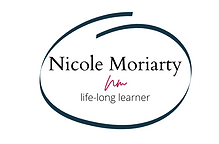

Comprehensive Literacy Framework
Literacy begins at home at an early age when parents narrate their days, sing songs, engage in play, and read their children bedtime stories. Schools join in and continue the literacy development of learners from the very first day of school until graduation. Our literacy journeys are deeply personal, individualized and long. The skills and competencies continue to grow in complexity as we ascend the grades. Each new year and content area provides its own rewards and challenges to the learner. As we approach college and post graduate studies our literacy development continues. As educators, being knowledgeable of multiple literacy approaches affords us the skillset to make responsive instructional moves to support the language and literacy development for all learners. Below, are the approaches and district-wide initiatives I have led during my tenure at Mineola.

Phonics & Word work
Decoding is the basis for learning how to read. In the early grades phonics, phonemic awareness and word study are intregal in supporting young learners in their literacy development. Programs like Fundations, Words Their Way, and Lexia Core 5 are literacy approaches to teach these most important skills.

Responsive Literacy
Once learners are ready to jump into books, a responsive literacy approach can be coupled with phonics instruction. This will allow the learner an opportunity to practice their fluency and provide the teacher ongoing assessment for immediate instructional considerations. Utilizing conferencing, guided reading, and writing teachers are able to continually take the pulse of their learners.

Workshop Framework
The workshop framework is similar to an apprenticeship model, where we learn to read and write from the model of an expert other. The model consists of a mini-lesson followed by ample opportunity for learners to read and write. In addition, it includes a final sharing of the session.

Structured Literacy
Structured literacy has been found to work well for certain learners. Orton-Gillingham Approach is an example. Specifically, Wilson and the S.P.I.R.E reading programs are widely used to meet the needs of learners who require a structured literacy approach.

Reading Apprenticeship
Teachers using the Reading Apprenticeship Approach models discipline-specific literacy skills and establish routines for discussion and collaboration that build upon the background knowledge of learners.

The Love of Reading
Ultimately, inspiring learners to love reading and develop both a reading and writing identity is most important. Multiple reading and writing opportunities throughout the day supports learners in finding and amplifying their voices.